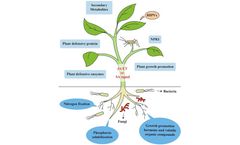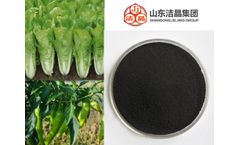Refine by
Biostimulant Articles & Analysis
12 articles found
So what is this novel plant biostimulant? SA show that it affects several plant processes. Abiotic stresses: SA impacts on several abiotic stresses including cold tolerance, temperature extremes, drought tolerance, tolerance to UV radiation, and soil salinity tolerance. ...
It got highly appraised of contractors, fertilizer formulators and biostimulant company. What’s brown algae polyphenol? Brown algae polyphenols is also called seaweed polyphenols, which is natural phenolic compounds extracted from seaweeds and are derivatives of phloroglucinol. ...
This has a direct impact on the energy of the crop and on the yield. Fertilisation and biostimulation must help the plant to sustain the coming flowering period to preserve the forming fruits. ...
Incidental releases of trichloroethene (TCE) at former electronics manufacturer in east-central Ohio impacted shallow overburden-bedrock groundwater. Hydrogeology includes 15 to 20 feet of alluvial silty clay or gravelly sand overlying fractured sandstone with estimated 10-foot thick interval of dense non-aqueous phase liquid (DNAPL) trapped in primary/secondary porosity of shallow bedrock. ...
NASA Stennis Space Center is impacted with trichloroethene (TCE) in deep water bearing units outside the influence of existing pump and treat recovery systems. Efforts to identify a cost-effective and sustainable alternative to existing remediation strategies included the following in-situ Pilot designed to evaluate feasibility of enhanced reductive dechlorination. The additive chosen was the ...
Foliar sprays of Inca®, the leading calcium mobility product, have been shown to improve both yield and shelf life of soft fruit. Biostimulants also have a role to play in maximising fruit yield and quality. Applications of HortiBoost, Hortifeeds unique combined biostimulant, have resulted in significant increases in yield and fruit quality in trials at New ...
Proof-of-Concept study to evaluate efficacy of biostimulation additive TPHenhanced to enhance native heterotrophic bacteria populations ability to degrade petroleum hydrocarbon contaminants (PHCs) under anaerobic conditions. ...
Foliar Formulations for Winter Hardiness Foliar phosphites Crop Rooter(r)P and OilSeed Raiser have been formulated to aid a healthy plant establishment and improve winter hardiness. Each combines the biostimulating action of phosphites to promote the development of deeper root systems alongside specific nutrients including beneficial levels of Potassium to maintain healthy growth ...
Glasshouse growing conditions are ideal for using natural biostimulants to increase the efficiency of fertiliser programmes. Neil Chambers, Technical Manager at Bell Brother Nurseries Ltd, has been talking to us about his use of seaweed extract Stimplex to help minimise growing times, produce healthier, more resilient plants and reduce chemical inputs. ...
Bill MacDonald, an instructor with Niagara College – “Biostimulants: What Are They?” MacDonald will share with us how biostimulants will be beneficial in our operations. He will discuss what they are, the differences and similarities between the various biostimulants, fertilizers and microbial fungicides. ...
Stimulating microbial growth through the use of acetate injection wells at the former uranium mill site in Rifle, Colorado, USA, has been shown to decrease dissolved uranium (VI) concentrations through bacterial reduction to immobile uranium (IV). Bioreduction also changed the redox chemistry of site groundwater, altering the mobility of several other redox‐sensitive elements present in the ...
The challenges posed by the presence of DNAPL are rooted in the unpredictable manner in which it spreads and moves through the subsurface, and the fraction of total contaminant mass it represents in an associated groundwater plume via sorbed, residual and drainable phases (typically greater than 99 percent). Under natural conditions, the dissolution of DNAPL is very slow, allowing groundwater ...
ByArcadis









